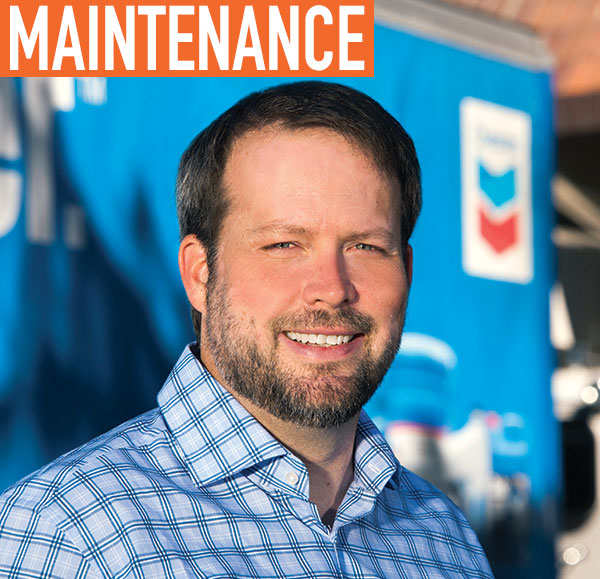In an article from last December, Shell Rotella provided information about how engine evolution lead to the engineering of a new oil category: PC-11. Now, with the deadline looming, Chevron senior staff engineer and head of the ASTM panel that oversaw the specification approval and implementation of PC-11, Shawn Whitacre, discusses what to expect from PC-11 in the coming months.
THE PROCESS
With a type of industry change as profound as the creation and implementation of a new oil category, it stands to reason that all the heavy hitters would step to up to the plate to make the best product, offering the smoothest transition. “The work that we did up until the end of last year was done in a coordinated fashion; that was the work that we did to bring the specification to life,” explains Whitacre. “It was a consensus process where the various oil marketers got together, along with additive companies and engine makers. It also involved the laboratories that conduct engine tests. They have significant involvement in the process since they’re the ones actually conducting and standardizing tests, making sure that data is available to all of us who are developing new products.”
“We spent the better part of five years working in that consensus fashion,” continues Whitacre, “trying to bring the spec to life.” This alignment is facilitated by the trade organizations that represent them. “The one coordinating entity is the American Petroleum Institute (API), which is conducting its own outreach effort.”
The API, with input from its membership, including Chevron, Shell, and others, provides resources for a more generic, category-specific outreach effort, while Chevron and other companies will focus on the new products to be released.
MEETING THE DEADLINE
The bulk of the work involved with the creation of PC-11 began to come to completion over the later part of 2015 and early this year. “The biggest hurdle that we got through in December of last year was formal approval of the specification. That finalized the tests that would be in the spec and the associated limits,” explains Whitacre.
“Most of those were fairly well known or anticipated in advance of that, so there was quite a bit of testing that we and our suppliers were able to do in advance of December, wrapping up in the early part of this year to finalize product formulations for commercialization this coming December,” Whitacre says.
With the bulk of the work done, the companies can focus on specific products, packaging, and general fine-tuning before the deadline. “It’s really just the implementation phase now, locking down the formulation, getting our blend plant ready for the transition to all of the new products that we’ll be making come December—getting the marketing information updated to reflect the new product,” Whitacre says. “Frankly, we’re doing quite a bit of outreach, especially during the first half of this year, making sure that our customers and other stake holders are well-educated on the upcoming changes, particularly in how it can and will impact their operations.”
WHAT’S IN A NAME
One of the finalizing steps of the process was the naming of PC-11’s subcategories. December 2015 saw subcategories PC-11A and PC-11B. “One of the things that I think is important now is that we have official names for the specifications,” says Whitacre. “They now have formal API designations: so, for PC-11A it’s API CK-4—which is the logical progression from the prior category, CJ-4—and then this new low-viscosity category, previously called PC-11B is now referred to as API FA-4.”
The new designations, which came from the licensing entity, are common across the board. “We’ve collectively agreed through the committees that developed this specification upon that naming convention for the two categories. So, that was done in consensus process with all stake holders, including oil marketers, additive companies, and engine manufacturers. Those are consistent designations regardless of supplier,” says Whitacre.
BEWARE LIMITATIONS
CK-4 is backward compatible and will be able to accommodate most vehicles on the road. FA-4, however, will not be applicable to all makes and models of engines, new or old. “It’s certainly the lowest viscosity offering of the new categories and will only be recommended in select new engines that were designed to take advantage of those performance and viscosity improvements,” explains Whitacre. “It is likely that FA-4 oils will be usable in some existing engines, so as to allow fleets with a mix of new and old vehicles to be able to utilize it. I do not expect that to be across the board. I think it will be some time before FA-4 oils are allowable for use in a large majority of the in-use fleet.”
NO DOWNTIME NECESSARY
Whitacre notes that it is important that businesses and individuals be proactive in learning about the changes. “Not just the generic information, but working specifically with their supplier to understand when the new products will be rolled out, what options are available, and identifying which product or products make the most sense for their fleet,” Whitacre says.
“After that, I think it should be a relatively smooth transition. It could be as simple as transitioning from a CJ-4—whether a 15w-40 or 10w-30—to the analogous CK-4 version of the same product. From that standpoint, it would be no different from any time an end-user switched from one product to a different product. I wouldn’t anticipate that it would necessitate any downtime itself on the fleet.”
BE INFORMED
Some companies have created sites in which to keep up with PC-11, including its progress and what to expect with the changeover. “Chevron has pc-11explained.com, which continues to be a work in progress as we update it with new information that will become more and more relevant to our new product line and any new developments that are related to what OEMs are saying about these new categories,” says Whitacre.
“I think that’s the real concern on everyone’s mind right now: to what extent the new categories will be recommended and reconciling which of the subcategories each OEM will recommend, including how they will recommend FA-4 for older engines. That’s the piece we don’t know for certain, because OEMs are still trying to figure it out themselves, trying to validate the performance of the new products that will be released in the next year or so on their engines.”
FOR MORE INFORMATION:
Find out more about PC-11, visit www.pc-11explained.com.
_______________________________________________________________________
MODERN WORKTRUCK SOLUTIONS: MAY 2016 ISSUE
Did you enjoy this article?
Subscribe to the FREE Digital Edition of Modern WorkTruck Solutions magazine.
![]()




